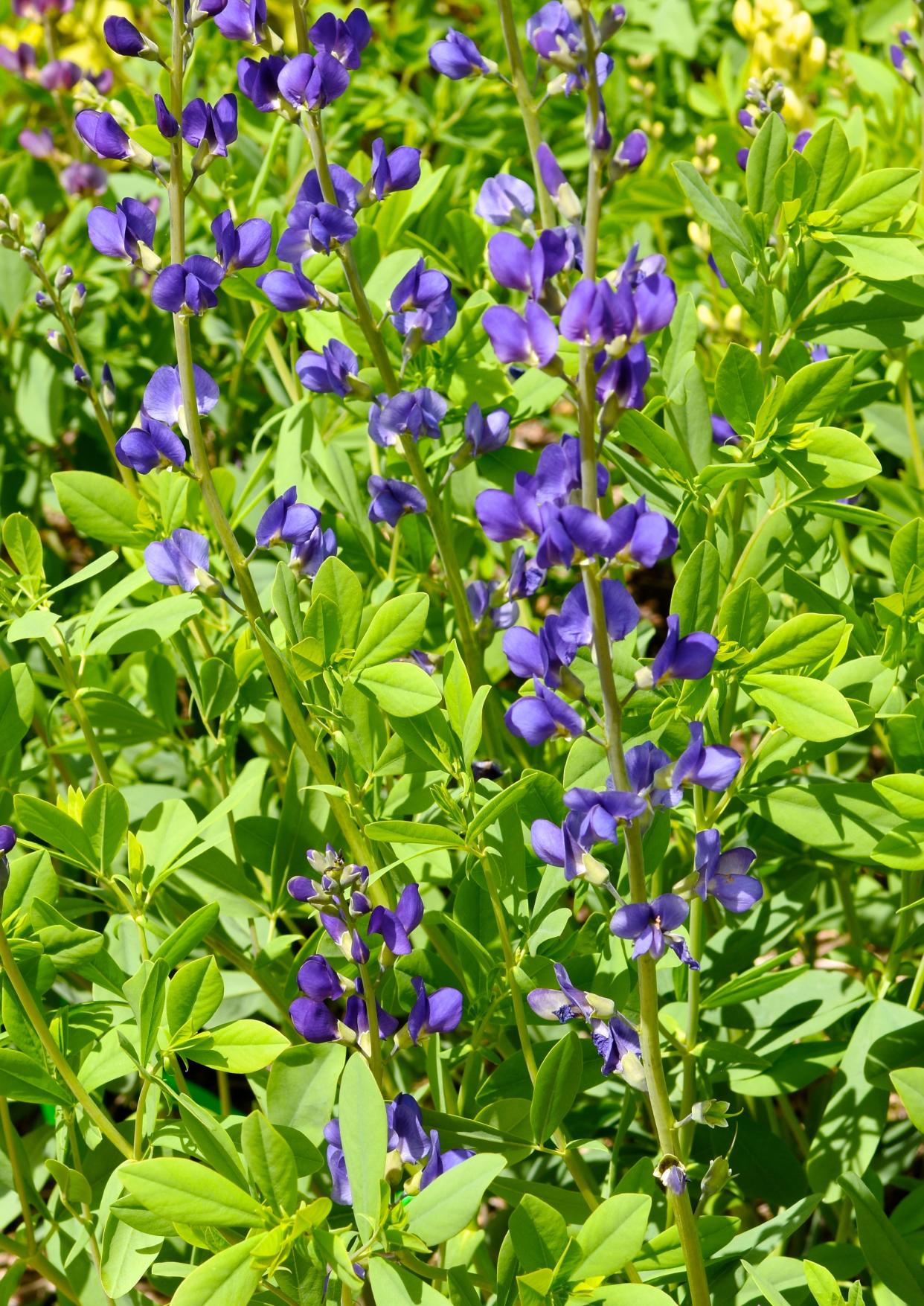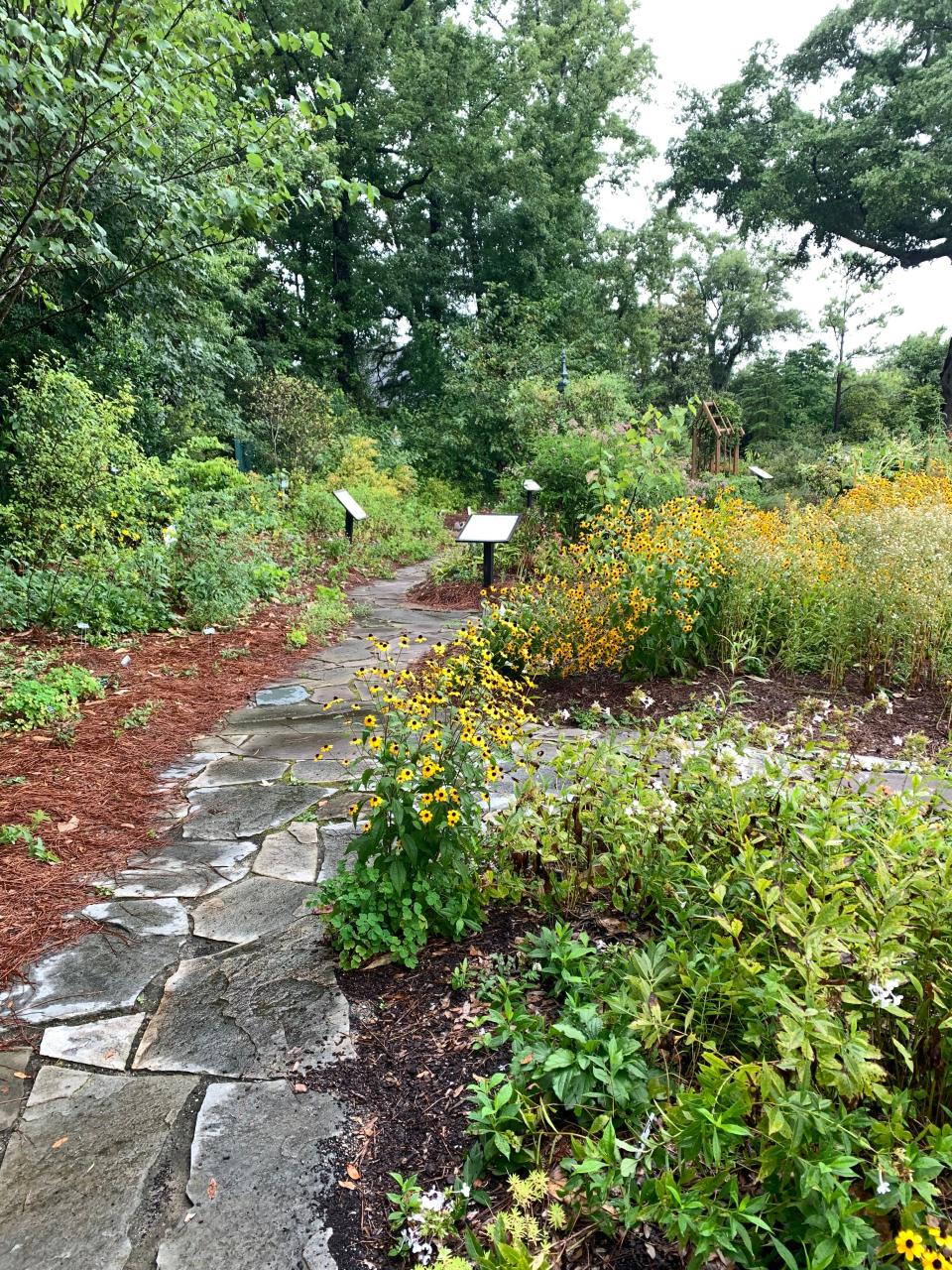Pretty and sustainable: Why native NC plants can be good for your garden and the coast

One day it's 72 degrees during the day, and 35 degrees at night. The next day, it's a high of 40 degrees and lows well below freezing for days on end, before returning to the 70s for good measure.
Welcome to winter in coastal North Carolina.
Summer can be just as schizophrenic, with a months-long drought headlined by temperatures reaching triple digits ended by a tropical storm that dumps a foot of rain over three days ... followed by another long drought.
For those coastal residents looking to test their green thumb, the region's weather can make landscaping a challenge − never mind trying to grow something in our sandy soil. And with so many people moving to North Carolina from other parts of the country, what plants they grew up with in, say, Connecticut, might not be the right ones for success in a backyard along the Intracoastal Waterway.
Realizing the challenges facing residents, along with the budding industry of going native, horticulturalists and plant lovers from several organizations came together roughly five years ago and formed the Coastal Landscapes Initiative (CLI).
"We really wanted to see if we could help people, educate them on how they can practice sustainable landscaping at the coast, which includes a number of things including how you water, how you fertilize, how you manage your stormwater, and where you plant," said Gloria Putnam, a coastal resources and communities specialist with N.C. Sea Grant.
With runoff among the biggest threats to coastal water quality, managing how properties control how much water they use and where it goes is vital − and a key part of that is what landscaping you choose.
SMALL BUT MIGHTY:4 things to know about Wilmington-grown microgreens
ADAPTING TO THE TIDESLiving shorelines: Along the N.C. coast, preparing for rising waters with natural remedies
Putnam said vegetation is often the things removed from a property before it's developed, and the last thing that's put back.
"Often we remove the vegetation and then plant back with vegetation that doesn’t provide the benefits that native vegetation did," she said. “It changes the dynamics of the site, so the idea was can we move the needle a little bit on this to see if we can provide information to people who are ready to do things a little differently."

Climate change is another reason coastal homeowners might want to go native when it comes to their gardens. With natives often more drought- and heat-tolerant than non-native plants, and with longer periods of dry, hot weather forecast for North Carolina in coming decades, they could be a hardier bet than exotics from another part of the country or world. Native coastal plants are also generally better able to withstand salt water, which can make them a better alternative for waterfront homeowners with sea levels projected to keep rising in coming decades and tide surges set to increase.
DRYING OUTDéjà vu: For the second year in a row, North Carolina is heading for a dry Christmas
In the latest edition of N.C. Sea Grant's Coastwatch magazine, the Coastal Landscapes Initiative has recommended a dozen plants and trees that are beautiful, environmentally beneficial, cost-efficient and adapted to thrive in the coast's harsh conditions.
Some of the plants might not be well known to many, and you might have to look beyond your nearby big-box retailer to find them. They also might be a bit more expensive than more common and popular plant species, since demand dictates supply.
“In some cases, you might have to look hard, but they're out there," Putnam said, adding that local cooperative extension offices and CLI's website can help folks find nurseries that offer them. The local offices and many public gardens also often have native plant gardens, so homeowners can see what the plants look like in a real-world setting.
Here's a look at some of the group's native plant picks:
Little bluestem
A warm-season bunchgrass that gets its name from its bluish-green springtime growth.
Putnam said the grass is salt tolerant and, once established, very drought tolerant.
"It's an attractive plant," she said.
Bluestem performs best in well-drained soils in full sun. It also tolerates a wide range of soil conditions, including clay.
Wild indigo
A drought-tolerant plant that thrives in full or partial light, wild indigo is also known as Baptisia. The plant is long-lived, low-maintenance, virtually pest-free and its spring-blooming flower spires are real attention getters − and not just for humans.
Bumblebees and other pollinators love wild indigo.
"It’s a lovely plant," Putnam said. "It takes a while to get established, but it adds a lot of color and structure to a garden.”
Goldenrods
Like a bit of color in your garden in the fall that also can help attract a variety of insect pollinators and butterflies, including the monarch butterfly?
Then goldenrods are for you.
Putnam said goldenrods are shade-tolerant and very easy to maintain, tolerating poor soils.
"That's the great thing about native plants," she said, adding that the plant is an "insect magnet" and blooms for a very long time.
American beautyberry
An understory shrub. the plants provides myriad of advantages for homeowners and their gardens' winged guests.
In the spring, American beautyberry's flowers attract pollinators. The plant follows that up in the fall by producing purple berries that draw songbirds to the garden. And if that wasn't enough, the shrub's leaves repel mosquitoes and ticks.
The plant is also very resistant to pests and is largely drought-tolerant.
Sweet pepperbush
Another shrub that can add something special to summer garden, sweet pepperbush's leaves turn golden brown in the fall.
Once established the plant can withstand short periods of drought and flooding, and it is fire-resistant.
The shrub's flowers produce high quality nectar and pollen that supports hummingbirds, butterflies, bees and other pollinators.
To see more native plants recommended by the Coastal Landscapes Initiative for coastal gardens, go to the winter 2022 edition of N.C. Sea Grant's Coastwatch magazine.
Reporter Gareth McGrath can be reached at GMcGrath@Gannett.com or @GarethMcGrathSN on Twitter. This story was produced with financial support from 1Earth Fund and the Prentice Foundation. The USA TODAY Network maintains full editorial control of the work.
This article originally appeared on Wilmington StarNews: Why native NC plants can be good for your garden and the coast

